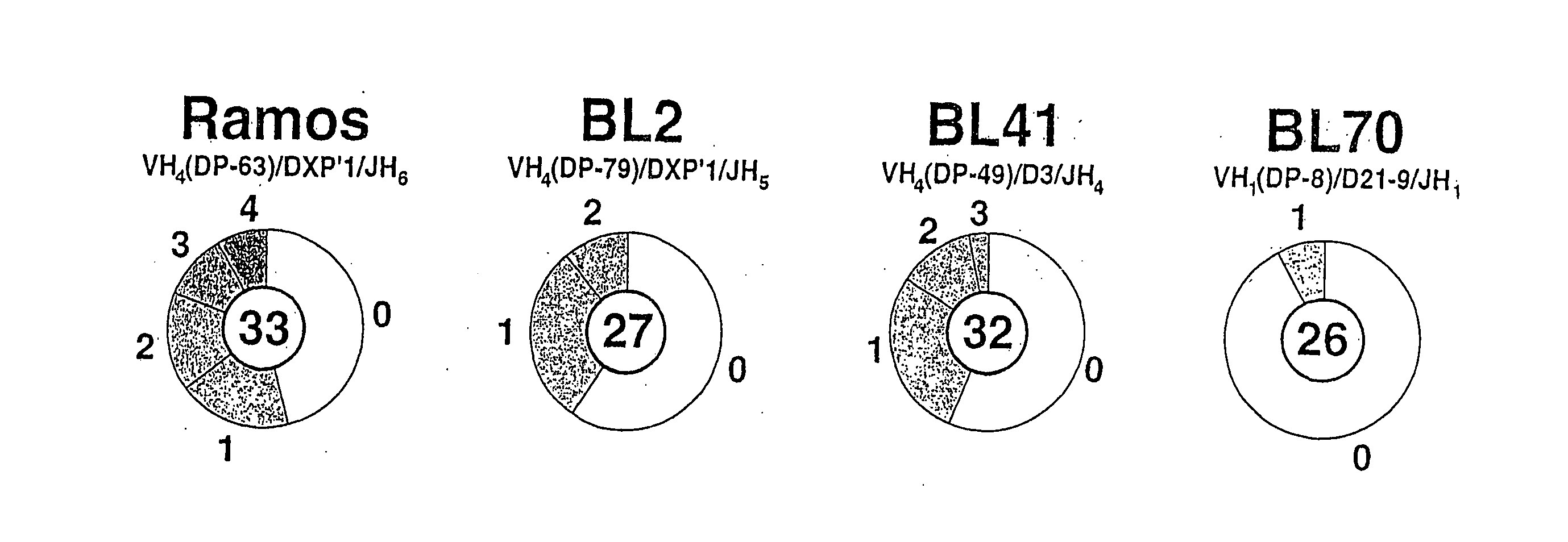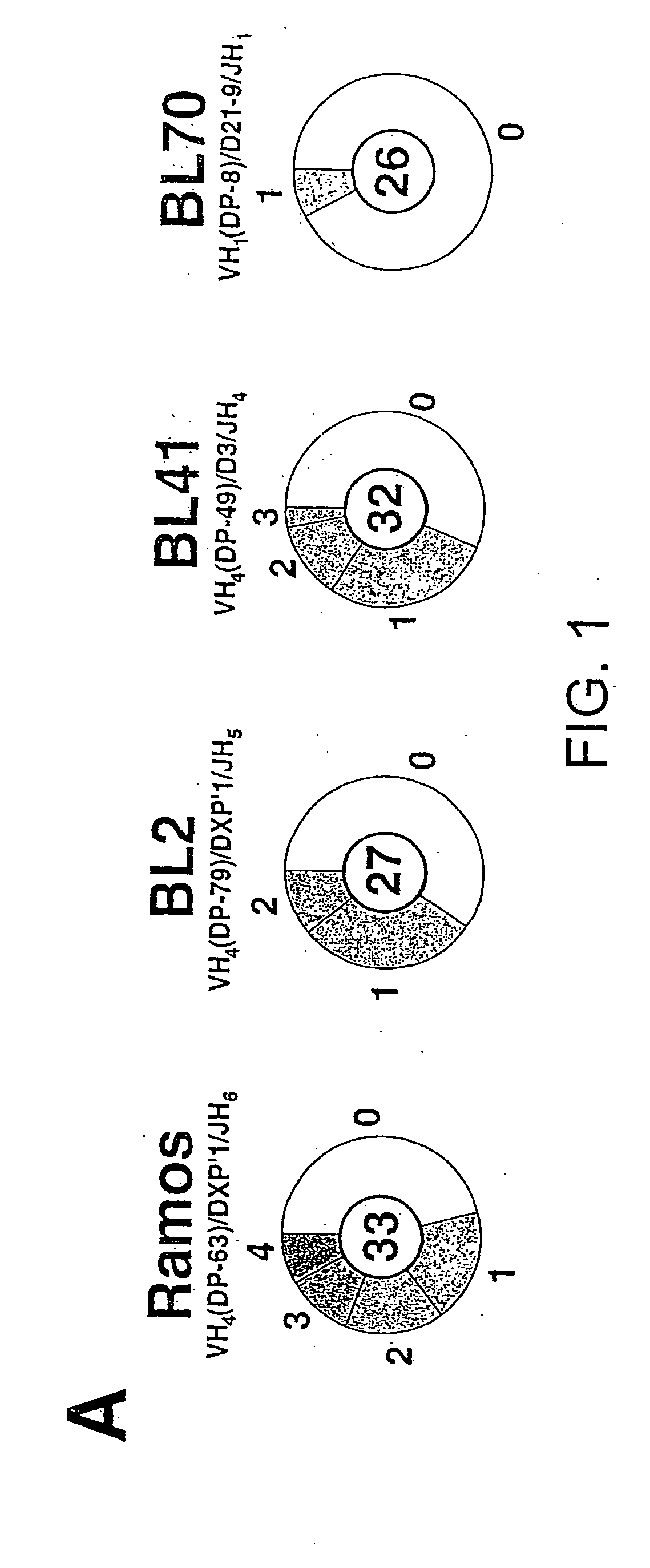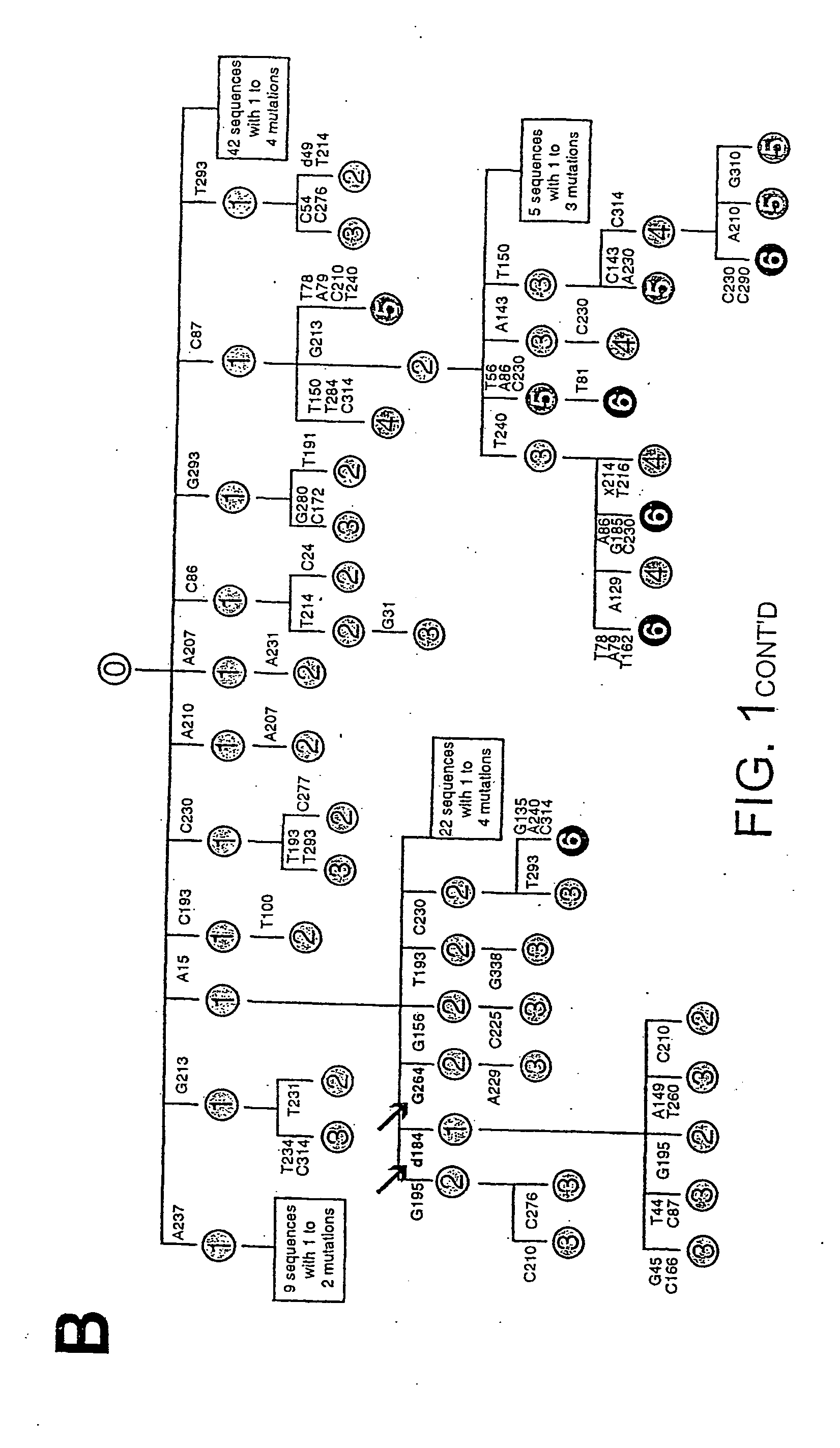Method for generating diversity
a technology of diversity and generating methods, applied in the field of generating diversity, can solve the problems of limited scope of nucleic acid preparation, poor suitability of artificial selection systems to facile methods, etc., and achieve the effect of increasing the probability of identification
- Summary
- Abstract
- Description
- Claims
- Application Information
AI Technical Summary
Benefits of technology
Problems solved by technology
Method used
Image
Examples
example 1
Selection of a Hypermutating Cell
[0119] In order to screen for a cell that undergoes hypermutation in vitro, the extent of diversity that accumulates in several human Burkitt lymphomas during clonal expansion is assessed. The Burkitt lines BL2, BL41 and BL70 are kindly provided by G. Lenoir (IARC, Lyon, France) and Ramos (Klein et al., 1975) is provided by D. Fearon (Cambridge, UK). Their rearranged VH genes are PCR amplified from genomic DNA using multiple VH family primers together with a JH consensus oligonucleotide. Amplification of rearranged VH segments is accomplished using Pfu polymerase together with one of 14 primers designed for each of the major human VH families (Tomlinson, 1997) and a consensus JH back primer which anneals to all six human JH segments (JOL48, 5′-GCGGTACCTGAGGAGACGGTGACC-3′, gift of C. Jolly). Amplification of the Ramos VH from genomic DNA is performed with oligonucleotides RVHFOR (5′-CCCCAAGCTTCCCAGGTGCAGCTACAGCAG) and JOL48. Amplification of the expr...
example 2
VH Diversification in Ramos is Constitutive
[0126] To address whether V gene diversification is ongoing, the cells are cloned and VH diversity assessed using a MutS-based assay after periods of in vitro culture. The Ramos VH is PCR amplified and purified as described above using oligonucleotides containing a biotinylated base at the 5′-end. Following denaturation / renaturation (99° C. for 3 nun; 75° C. for 90 min), the extent of mutation is assessed by monitoring the binding of the mismatched heteroduplexed material to the bacterial mismatch-repair protein MutS, filter-bound, with detection by ECL as previously described (Jolly et al., 1997).
[0127] The results indicate that VH diversification is indeed ongoing (see FIG. 2A). DNA is extracted from Ramos cells that have been cultured for 1 or 3 months following limit dilution cloning. The rearranged VH is PCR amplified using biotinylated oligonucleotides prior to undergoing denaturation / renaturation; mismatched heteroduplexes are then...
example 3
Examination of the Nature of VH Mutations in Ramos
[0131] A database of mutational events is created which combines those detected in the initial Ramos culture (from 141 distinct sequences) with those detected in four subclones that have been cultured in various experiments without specific selection (from a further 135; distinct sequences). This database is created after the individual sets of sequences have been assembled into dynastic relationships (as detailed in the legend to FIG. 1B) to ensure that clonal expansion of an individual mutated cell does not lead to a specific mutational event being counted multiple times. Here an analysis of this composite database of 340 distinct and presumably unselected mutational events (200 contributed by the initial Ramos culture and 140 from the expanded subclones) is described; separate analysis of the initial and subclone populations yields identical conclusions.
[0132] The overwhelming majority of the mutations (333 out of 340) are singl...
PUM
| Property | Measurement | Unit |
|---|---|---|
| Chemical shift | aaaaa | aaaaa |
Abstract
Description
Claims
Application Information
 Login to View More
Login to View More - R&D
- Intellectual Property
- Life Sciences
- Materials
- Tech Scout
- Unparalleled Data Quality
- Higher Quality Content
- 60% Fewer Hallucinations
Browse by: Latest US Patents, China's latest patents, Technical Efficacy Thesaurus, Application Domain, Technology Topic, Popular Technical Reports.
© 2025 PatSnap. All rights reserved.Legal|Privacy policy|Modern Slavery Act Transparency Statement|Sitemap|About US| Contact US: help@patsnap.com



